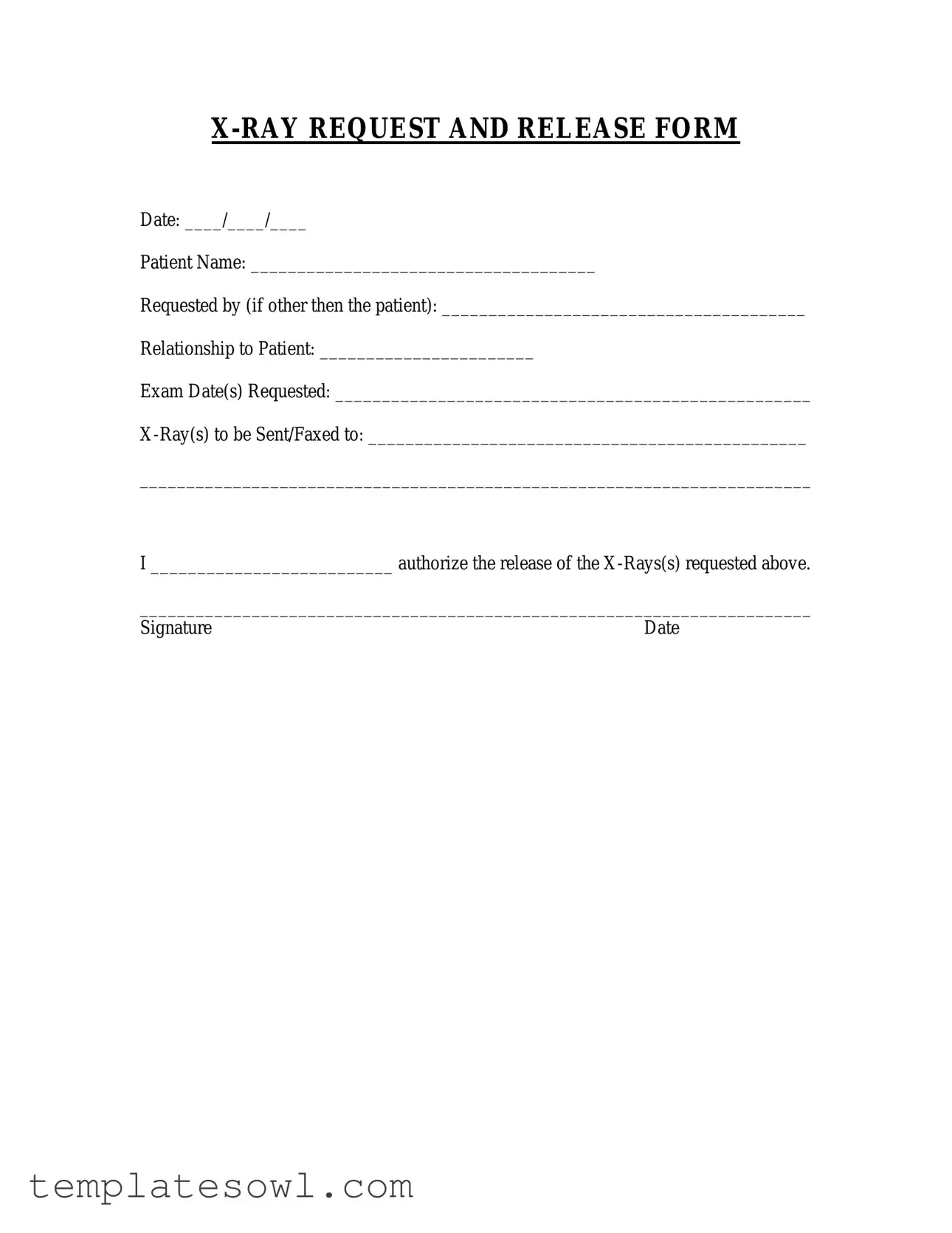What is the purpose of the X-Rays Request form?
The X-Rays Request form is used to authorize the release of a patient's X-ray images to designated individuals or facilities. This ensures that personal medical information is shared appropriately and only with authorized parties.
Who should fill out the X-Rays Request form?
This form should be completed by the patient or, if the patient is unable to do so, by a person who has the legal authority or a valid relationship to the patient, such as a parent or legal guardian.
What information do I need to provide on the form?
The form requires details such as the date, patient name, the name of the person requesting the X-rays if not the patient, relationship to the patient, the dates for which the X-rays are requested, and where the X-rays should be sent or faxed.
Is my signature required on the form?
Yes, the form must include your signature to authorize the release of the X-rays. Without a signature, the request cannot be processed.
What should I do if I am unable to sign the form?
If you cannot provide a signature, a legal representative or authorized individual may be able to sign on your behalf. Be prepared to provide documentation that verifies their legal authority to act on your behalf.
Where do I send the completed X-Rays Request form?
The completed form should be sent or faxed to the medical facility that holds your X-ray records. Ensure to check their specific submission guidelines for accurate processing.
How long does it take to process a request for X-rays?
The processing time can vary by facility, but generally, you can expect a timeframe of several business days. To get a more accurate estimate, consider contacting the facility directly after submitting your request.
Can I request X-rays for another person?
Yes, you can request X-rays for someone else, but you must have legal authority or their consent. Make sure to fully complete the section of the form that identifies your relationship to the patient.
What happens if the X-Rays Request form is incomplete?
If the form is incomplete, it may delay the processing of your request. Therefore, it is crucial to ensure all necessary sections are filled out correctly before submission.
